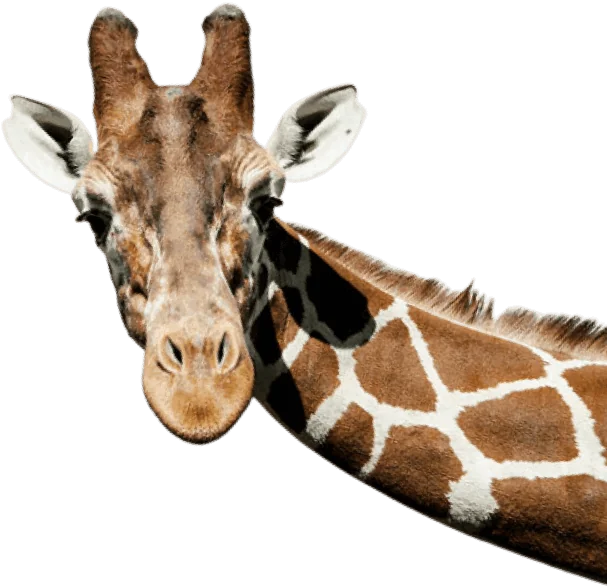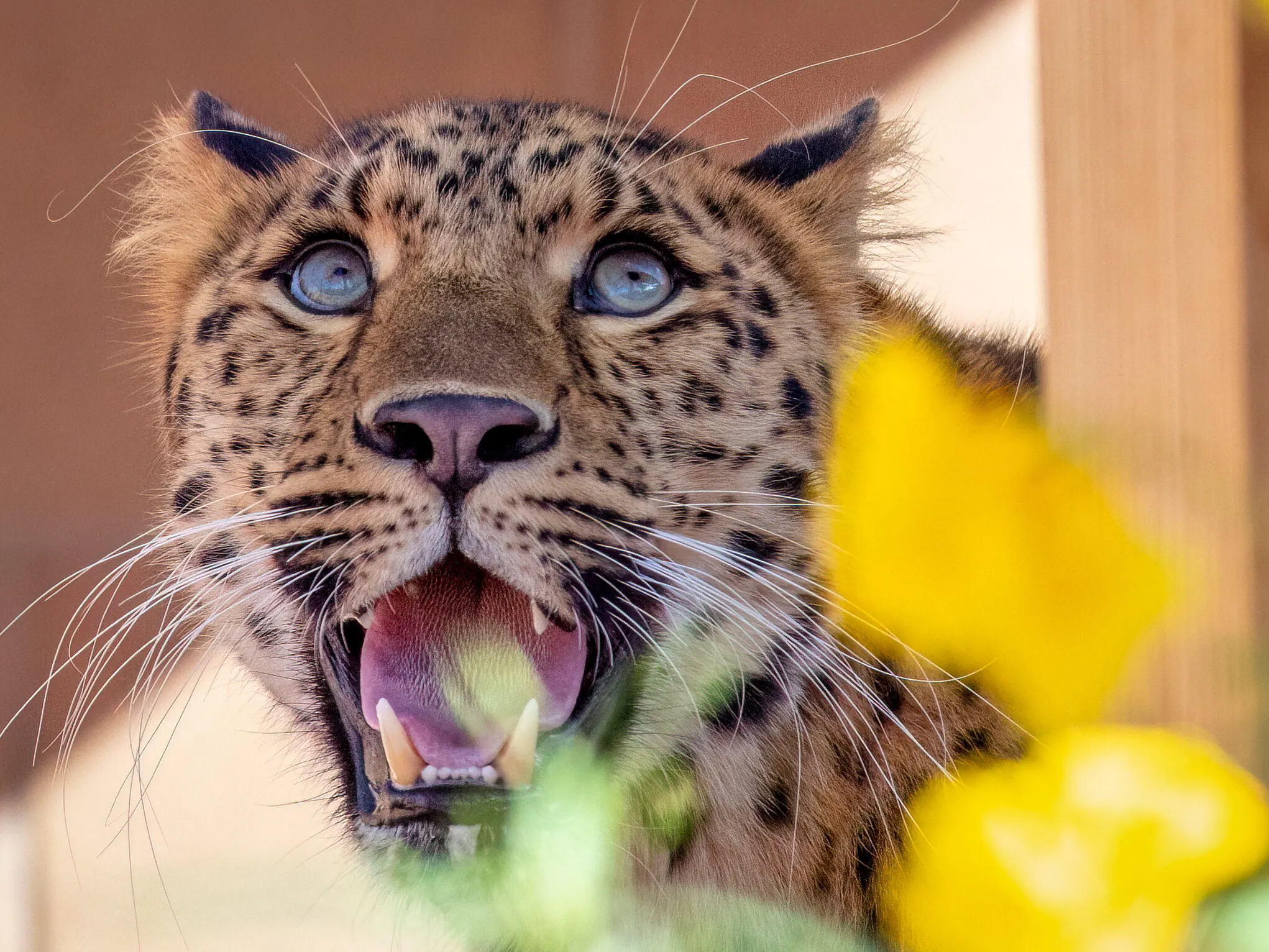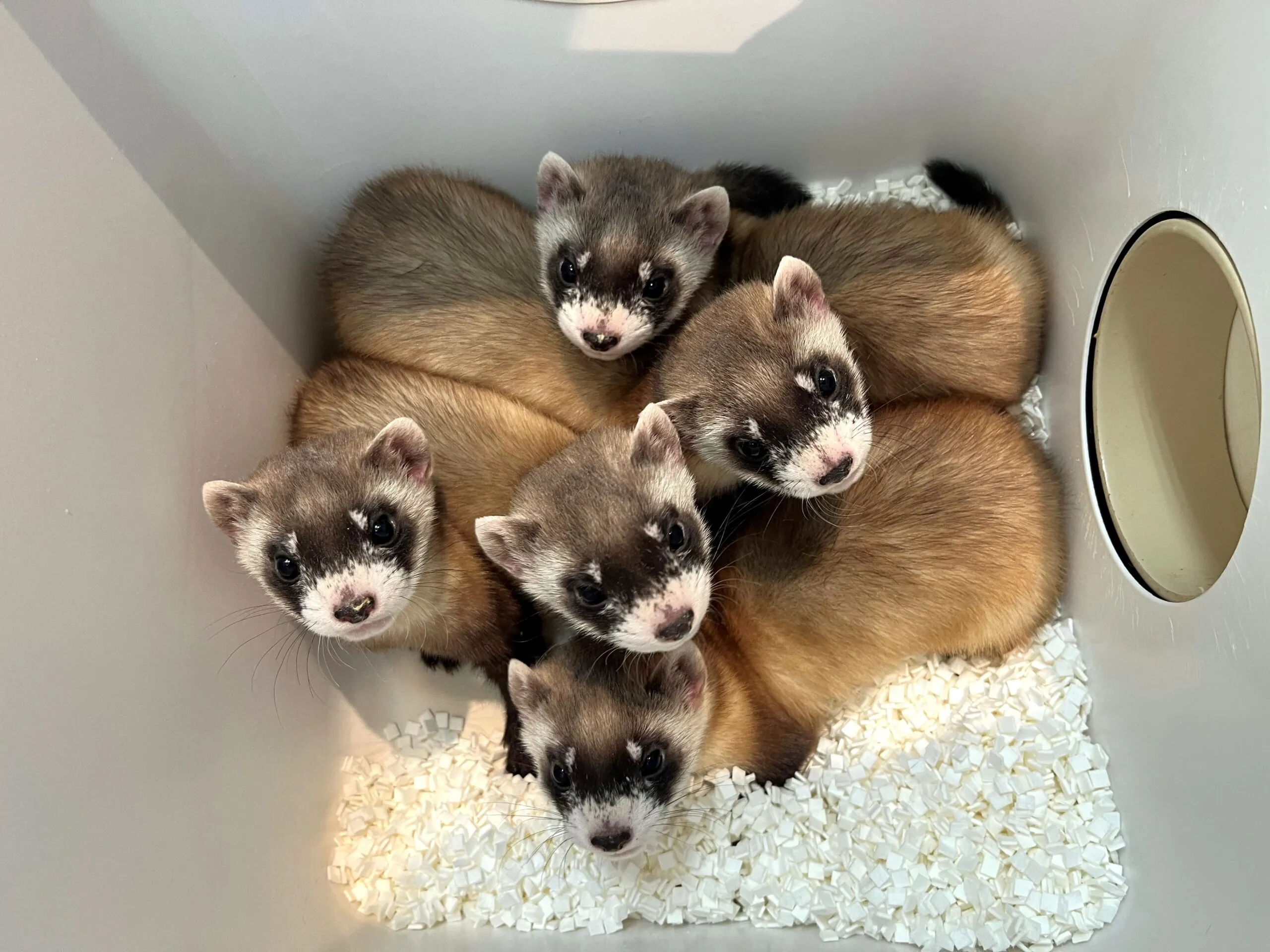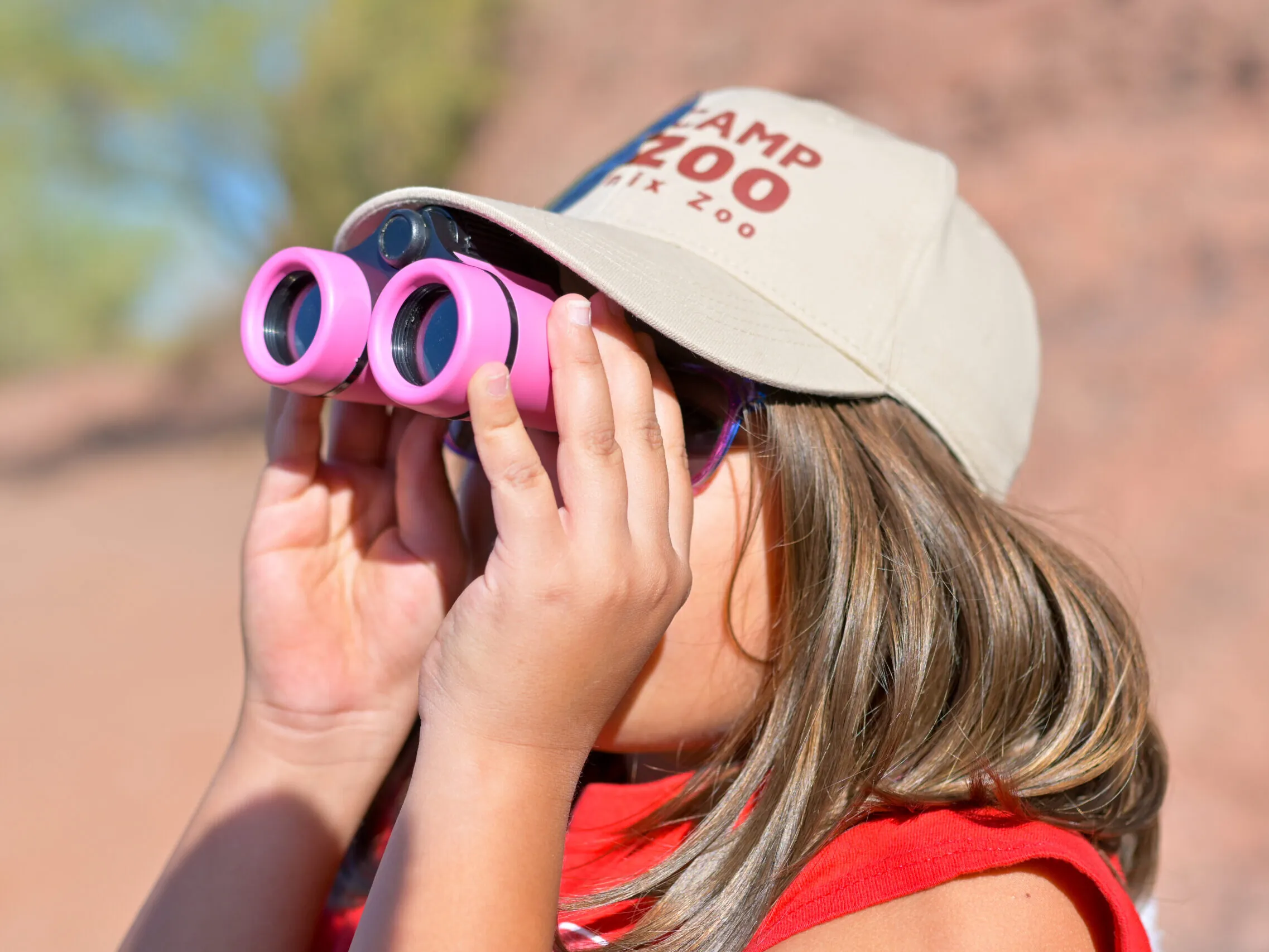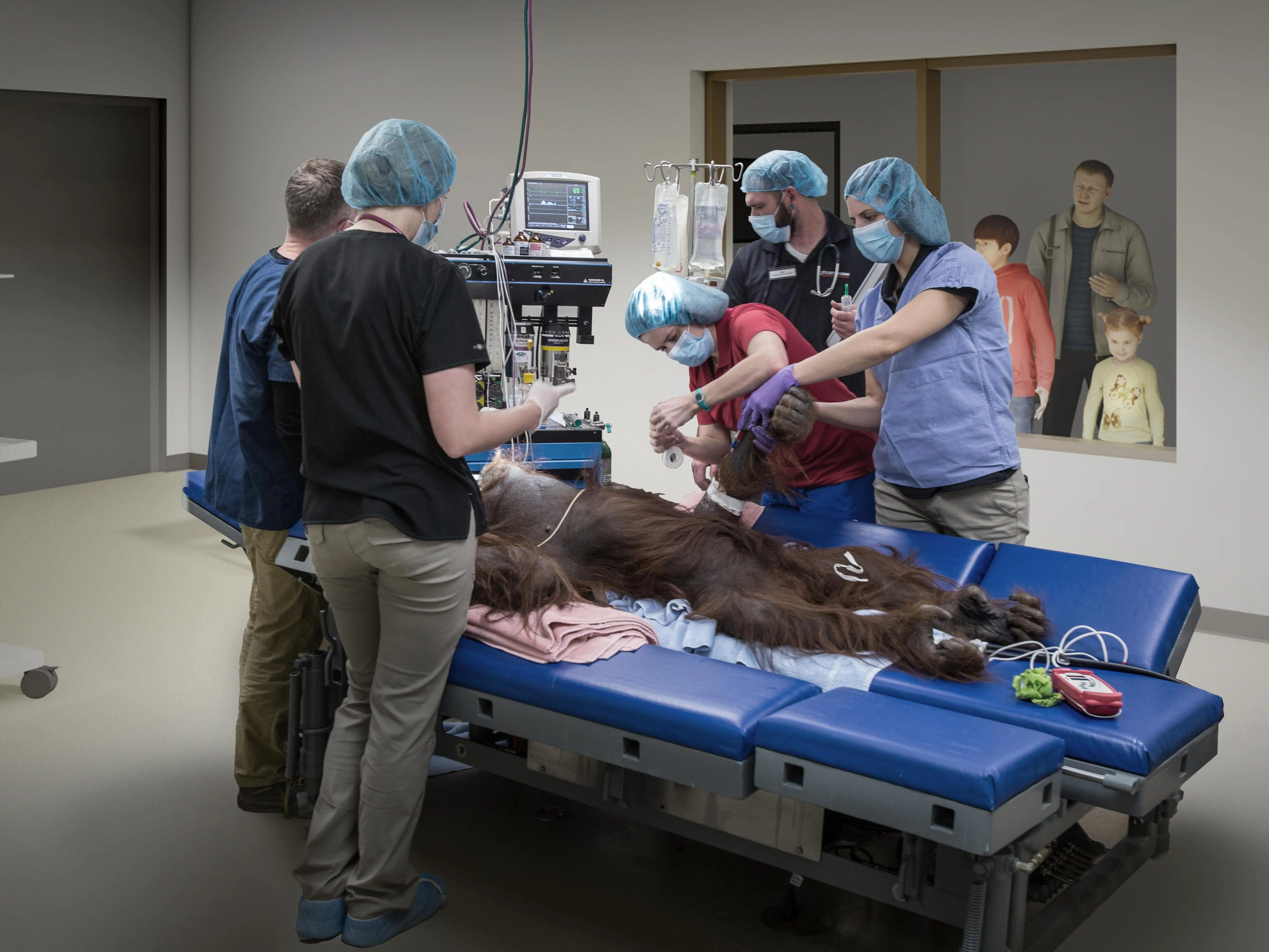Hamadryas Baboon
Papio hamadryas
More Cliques Than High School
One Male Units (often shortened to OMUs) are the basis of the entire hamadryas baboon social system. An OMU is always made up of one leader male, around one to nine females and their babies, and occasionally a “follower” male. Leader males only mate within their own OMU and will aggressively herd females who stray from the unit. During the day, hamadryas baboons will forage for food with their OMUs, and will occasionally work together in larger groups called bands. At night, these monkeys will rest together in troops consisting of hundreds of baboons.
Home Sweet Home
Most monkeys sleep in trees for protection, but you’re more likely to find hamadryas baboons sleeping on high clifftops. During the day, they will split into smaller groups to forage for food and then reunite later at a watering hole. Once reunited, they return together to one of the several sleeping sites in their home range. These cliffs aren’t just for sleeping, they’re also an important place to socialize. The baboons use their time between foraging and sleeping to play, groom and mate.
The Sacred Baboon
Ancient Egyptians believed that animals are messengers to the gods and represent divine qualities. They associated hamadryas baboons with several Egyptian gods – especially Thoth, the god of wisdom and justice – and were thought to demonstrate qualities like fairness, protection, and regeneration. The chattering and playing these baboons do at sunrise was also interpreted as them speaking in a secret language to the sun god Ra. By the 16th century, hamadryas baboons were extinct in Egypt, but they were so important to Egyptian culture they were imported from nearby areas. Evidence, like mummified baboons in tombs, suggests some people even kept them as pets.
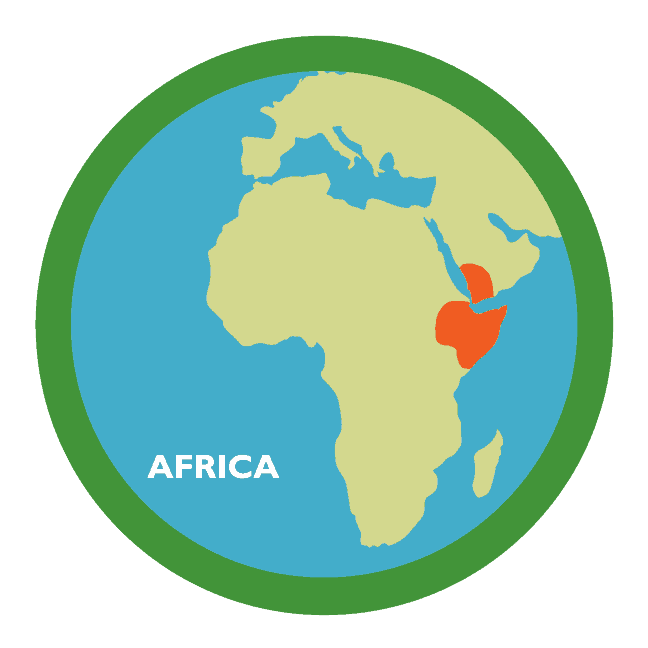
Diet: grass seeds, roots, insects, small animals
Zoo Diet: formulated feed, starch, veggies, fruits, greens, browse
Habitat: semi-deserts, savannas, rock outcroppings
Weight: 20 – 50 lbs
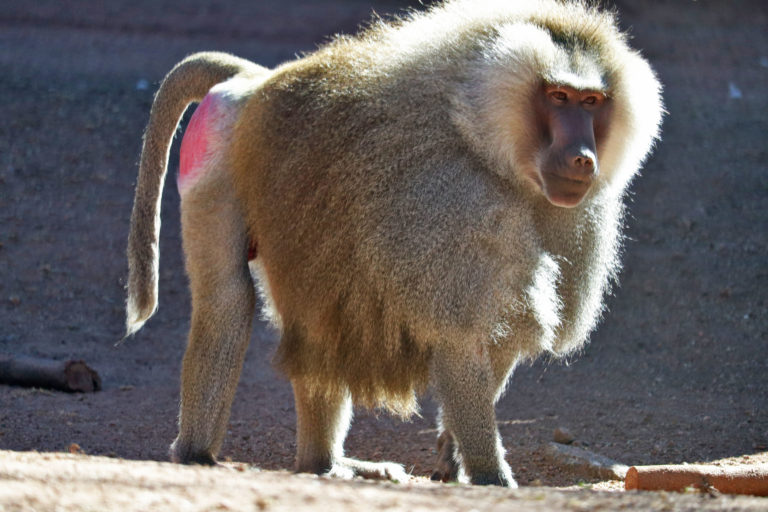
Plan your visit today!
The Phoenix Zoo is one of the largest non-profit zoos in the U.S., caring for over 3,000 animals, with nearly 400 species represented, including many threatened/endangered species.
